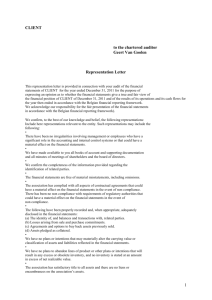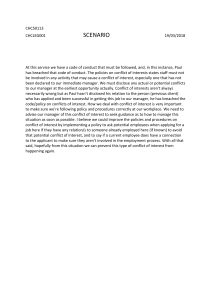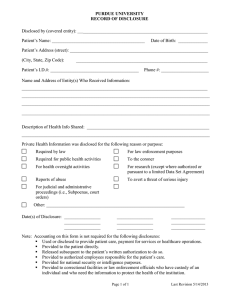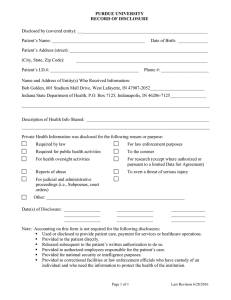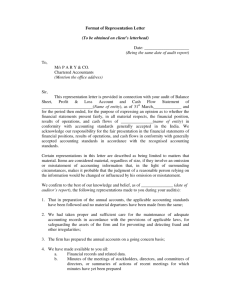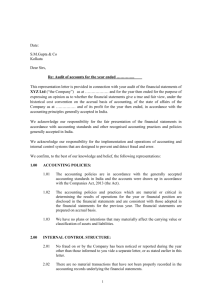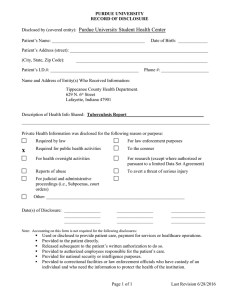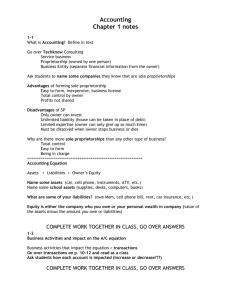2.02 student notes
advertisement
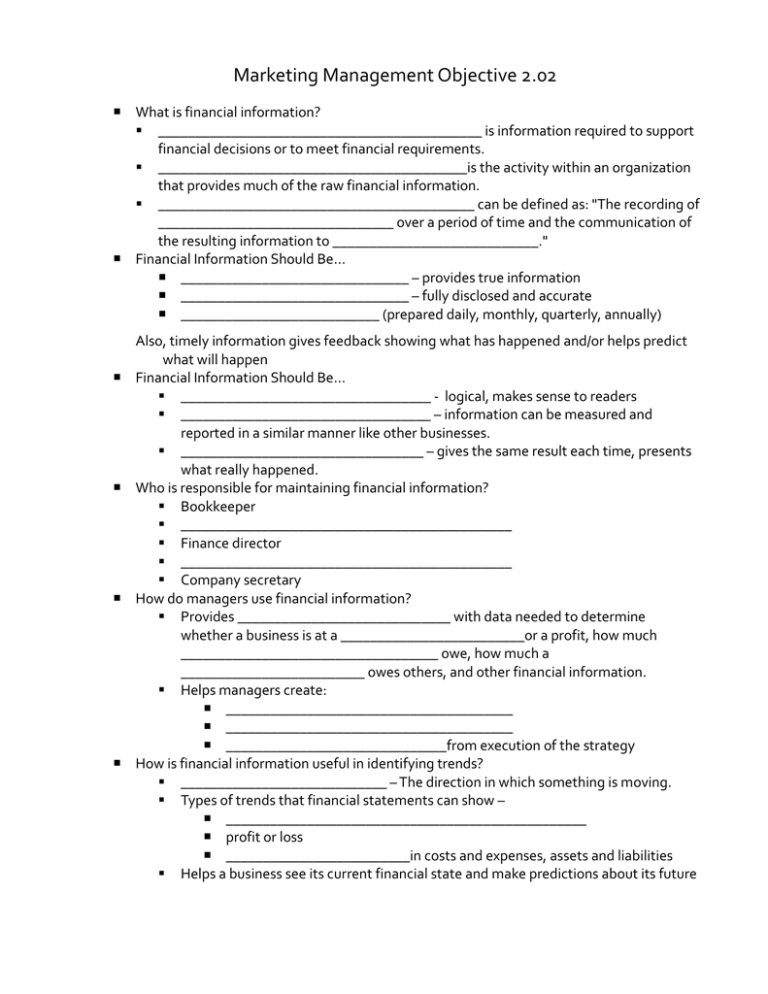
Marketing Management Objective 2.02 What is financial information? ____________________________________________ is information required to support financial decisions or to meet financial requirements. __________________________________________is the activity within an organization that provides much of the raw financial information. ___________________________________________ can be defined as: "The recording of ________________________________ over a period of time and the communication of the resulting information to ____________________________." Financial Information Should Be… _______________________________ – provides true information _______________________________ – fully disclosed and accurate ___________________________ (prepared daily, monthly, quarterly, annually) Also, timely information gives feedback showing what has happened and/or helps predict what will happen Financial Information Should Be… __________________________________ - logical, makes sense to readers __________________________________ – information can be measured and reported in a similar manner like other businesses. _________________________________ – gives the same result each time, presents what really happened. Who is responsible for maintaining financial information? Bookkeeper _____________________________________________ Finance director _____________________________________________ Company secretary How do managers use financial information? Provides _____________________________ with data needed to determine whether a business is at a _________________________or a profit, how much ___________________________________ owe, how much a _________________________ owes others, and other financial information. Helps managers create: _______________________________________ _______________________________________ ______________________________from execution of the strategy How is financial information useful in identifying trends? ____________________________ – The direction in which something is moving. Types of trends that financial statements can show – _________________________________________________ profit or loss _________________________in costs and expenses, assets and liabilities Helps a business see its current financial state and make predictions about its future How is financial information useful in contracts? An important specific role of financial statements is that they are used in ______________________ and ________________________________________. For example: A limit to the amount that a company may ________________ may be based on _______________ taken from the ___________________, such as gearing, interest cover or other measures. If such limits are breached, various consequences may arise including the debt being ____________________________. In an agreement for the ______________________ of a subsidiary, the price to be paid may include an ___________________________ plus a further amount of contingent consideration that may be payable depending on the level of profits in the period (typically ______________________ years) after the sale. Part of the ________________________________, manager or group of employees may be based on an accounting measure such as _________________ in (or absolute amount of) a measure of profit such as ___________________, pre-tax profit, __________________________ or _________________________. How does financial data aid in accounting? Business wants to know the _____________________________ or __________________________ during the year and its financial position at the end of the year. This is disclosed by _____________________________ and the balance sheets. ___________________________________________ provide necessary data for preparing these statements. How does analysis of financial data aid in verifying information? Financial information and data are needed for ______________________________, planning, ____________________________ and forecasting. __________________________________maintained by book-keeping are the source of such information. _______________________________________ are regarded by the tax authorities as ____________________________ and ____________ for determining tax liability. How does financial data aid in determining variance? It provides the__________________________ needed to compare figures. It provides the data needed to determine the_______________________________ . The ______________________________ is the difference in the planned financial outcomes (from the budget) and the actual financial outcomes. How does financial data guide financial decision making? The finance department of a company generates a variety of financial information that is helpful in decision making, including: ________________________________________ providing details of whether the business is making efficient use of financial resources. _________________________________________ providing details of a business’ assets and liabilities, as well as the ________________________ of the business. How does financial data guide financial decision making? ________________________________________ about particular types of trading and accounts with particular customers and suppliers. Information about the purchase of ______________________________________. Information about the ___________________________ paid out by a business. Information about _________________________________. How does financial data guide financial decision making? By providing a steady and up-to-date flow of information, a business is able to make appropriate decisions about: ___________________________________________ how to increase sales ____________________________________________ when to purchase new capital assets _____________________________________________.
